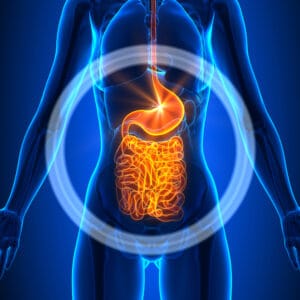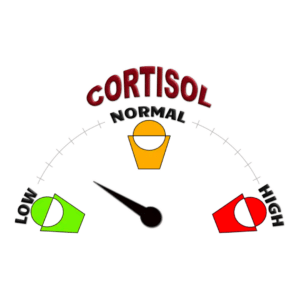The FODMAP diet seems to be the trend lately, and I’ve had several people asking me about it recently. It is gaining popularity in the media, on blogs and in research studies. 1 Does this mean it’s another awful fad diet, or does it have some merit? The truth is that the FODMAP diet is only worth considering if you have Irritable Bowel Syndrome-type digestive symptoms and are someone who reacts to FODMAPS.
If you are this person, recent studies are showing significant improvement in digestive symptoms using the FODMAP diet, whilst at the same time acknowledging that, although the FODMAP diet may provide great relief, it doesn’t address underlying causes of digestive imbalances.
The truth is that the FODMAP diet is only worth considering if you have Irritable Bowel Syndrome-type digestive symptoms and are someone who reacts to FODMAPS.
What are FODMAPS?
“FODMAP” is a medical acronym for Fermentable, Oligosaccharides, Disaccharides, Monosaccharides and Polyols. These are essentially all types of fermentable carbohydrates. 2
In people with Irritable Bowel Syndrome, the fermentation of the FODMAP carbohydrates (i.e oligosaccharides, disaccharides, monosaccharides and polyols) causes symptoms of bloating, flatulence, pain, diarrhoea and sometimes constipation. 2 The theory is that, for these people, a reduction in fermentation will reduce these symptoms, hence the reason why high FODMAP foods are eliminated for a period. 2
“Oligo” means “a few” or “many” in Greek, and a “saccharide” is a sugar molecule, so “oligosaccharides” refers to a chain of sugars or short-chain carbohydrates. 2 These are complex carbohydrates. In the case of FODMAPS, we are talking about fructans and galactans. 2
Fructans are types of complex carbohydrates that like to lurk in many different foods, from fruit and vegetables to cereal grains. They are also added to processed foods. Humans lack the enzymes to break them down, which means they are malabsorbed in the small intestine, where they are fermented by gut bacteria. Fructans are contained in a variety of vegetables and fruit, such as onions, garlic, artichokes, bananas and cereals. 2
Galactans are also a type of complex carbohydrate. They are chains of the sugar ‘galactose’. The primary dietary source of galactans are certain legumes, for example, baked beans, kidney beans, chickpeas and soy products. They are also present in cabbage and Brussels sprouts. 2
“Di” refers to two sugar molecules, although in the case of FODMAPS, researchers believe the only disaccharide to give rise to symptoms is lactose. 2
“Mono” is one sugar molecule, but here again researchers only believe fructose to be a problem. 2
This is another name for sugar alcohols such as mannitol, sorbitol, xylitol and isomalt, which are readily fermented by bacteria.
How do FODMAPS affect susceptible individuals?
These foods contribute to digestive problems such as constipation, diarrhoea, gas, pain and bloating, because they are poorly absorbed in the small intestine where they are fermented by bacteria. 2 It is the waste products of the fermentation that causes the symptoms. These waste products can increase intra-abdominal pressure causing reflux problems and stomach pain. 3-4 For individuals prone to these symptoms, eliminating these foods provides relief. 3-4
To determine whether you are reacting to FODMAPS and could benefit from avoiding foods with a higher FODMAP content, you may want to test each food by eliminating it for a period of 4 to 6 weeks to see if your symptoms improve, and then slowly re-introducing it to see if they return.
Are you someone with a FODMAP intolerance?
To determine whether you are reacting to FODMAPS and could benefit from avoiding foods with a higher FODMAP content, you may want to test each food by eliminating it for a period of 4 to 6 weeks to see if your symptoms improve, and then slowly re-introducing it to see if they return.
Elimination
High FODMAP foods, to be avoided include:
- Apples, apricots, avocados, blackberries, cherries, lychees, nectarines, peaches, pears, plums, prunes, watermelon and dried fruits;
- Asparagus, artichokes, beetroot, bell peppers, broccoli, Brussels sprouts, cabbage, cauliflower, eggplant, fennel, garlic, leek, mushrooms, onion, shallots, sweetcorn;
- Honey, corn syrup, sorbitol, mannitol, isomalt, mannitol, xylitol;
- Beans, chickpeas, lentils;
- Milk from cows, goats, and sheep, custard, ice cream, yoghurt, soft unripe cheese, grains, wheat, barley.
Re-introduction
The re-introduction of these foods is important because many have prebiotic effects, meaning they can foster healthy growth of beneficial bacteria. 5 Therefore, all patients are encouraged to re-introduce them slowly, tracking symptoms, to a level they are comfortable with.
Nutritional Therapists may recommend the FODMAP protocol as part of a dietary protocol when investigating the possible underlying causes of a patient’s digestive symptoms. These causes typically include low stomach acid, small intestinal bacterial overgrowth (SIBO), increased intestinal permeability (leaky gut), or dysbiosis (abnormal gut bacteria).
A useful FODMAP tool worth looking into is the Monash University app. If you suffer digestive symptoms that need investigating on a one-to-one basis, you can get in touch with Andy here.
A FODMAP-friendly recipe to try yourself…
In the meantime, here is an excellent FODMAP-friendly bread recipe, which is delicious whether or not you are following the FODMAP protocol, as well as super-nutritious and Sugar Safe®!

Ingredients
1 cup walnuts
1 and 1/2 cups pumpkin seeds
1/2 cup sunflower seeds
3 tbsp psyllium husk powder
2 tbsp chia seeds
1 cup brown rice flour, sifted
2 tbsp mixed herbs (rosemary, oregano and basil are a nice blend… and fresh is even better)
2 cups filtered water
Himalayan salt, to taste
Coconut oil for greasing the tin
Method
Process the walnuts, and one cup of the pumpkin seeds until a smooth meal forms in a food processor (approximately 2 minutes). Transfer the mixture to a large bowl and combine with the remaining pumpkin seeds, sunflower seeds, psyllium husk, chia seeds, brown rice flour, fresh herbs and salt. Gradually pour in the water until a thick dough-like consistency forms. Let the mixture sit for an hour and a half until the chia seeds and psyllium husk powder have absorbed all the water (there should be no liquid remaining).
Pre-heat the oven to 180C fan and grease the base of a loaf tin with coconut oil. Pour the mixture into the tin and press it down, making it as compacted as possible. Place the tin in the oven and bake for 40-60 minutes until the top is a caramelised colour and you can draw a clean knife out of the centre of the loaf. You can either store the bread in the fridge for a week, or slice it and freeze it and use it when you’re ready.
REFERENCES
- Nanayakkara W, Skidmore P, O Brien L, Wilkinson T, Gearry R (2016) Efficacy of the low FODMAP diet for treating Irritable Bowel Syndrome: the evidence to date. Clinical and Experimental Gastroenerology 9: 131-142;
- Magge S, Lembo A (2012) Low-FODMAP diet for the treatment of Irritable Bowel Syndrome. Gastroenterology and Hepatology 8:(11): 739-455;
- Gibson P, Shepherd S (2012) Key management strategy for functional gastro-intestinal symptoms. The FODMAP approach. DOI: 10.111/j.1440-1746.2009.06149.x;
- Gibson P, Shepherd S (2012) Food choices as a key management strategy for functional gastrointestinal symptoms. American Journal of Gastroenterology 107(5): 657-666 ;
- Barret J, Gibson P (2012) Fermentable oligosaccharides, disaccharides, monosaccharides and polyols (FODMAPS) and non-allergic food intolerances: FODMAPS or food chemicals? 5(4): 261-268








